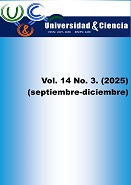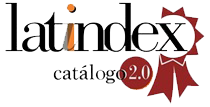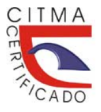Los nativos digitales y su creatividad: reflexión de la Inteligencia Lógico-Matemática en una xilografía abstracta
DOI:
https://doi.org/10.5281/zenodo.17039055Palabras clave:
creatividad, digitalización, lógica, matemática, xilografíaResumen
Introducción: el estudio de una xilografía abstracta avaló a la temática de los nativos digitales y su creatividad. De este modo, la Inteligencia Lógico-Matemática fue vista, dentro de la socialización de la fábula de la digitalización y habilidad visual, como actitud de vida. Objetivo: bosquejar acciones, en bien de la visualización xilográfica y del razonamiento deductivo, encuadradas en una reflexión dual. Método: con base a la hiperconectividad, al ser un factor cronológico de integración e ingenio, se aplicó el pensamiento divergente. Resultados: la expresión digitalizadora, como autora de la mensajería, ayudó con el protagonismo de la participación cognitiva y la socialización demarcó la creatividad, como fenómeno sociocultural, dentro del desarrollo actitudinal de cualquier observador. Tanto cuanto, se facultó al talante cuantitativo y la estructura sistematizada dentro de la planificación estratégica. Conclusión: apelando al método de premisas, como apéndice de la dualidad, el razonamiento lógico se concertó en las teorías existencialistas de la lógica mental como razonamiento complementario.
Descargas
Citas
Caponigro, I. (2024). Referring and quantifying without nominals: headless relative clauses across languages. Semantics and Linguistic Theory. 744-774, https://doi.org/10.3765/3dgvfv89
Chan, M. T. V., Hedrick, T. L., Egan, T. D., García, P. S., Koch, S., Purdon, P. L., Ramsay, M. A., Miller, T. E., Mcevoy, M. D. and Gan, T. J. (2020). American Society for Enhanced Recovery and Perioperative Quality Initiative Joint Consensus Statement on the Role of Neuromonitoring in Perioperative Outcomes: Electroencephalography. Anesthesia and Analgesia, 130(5). 1278-1291. https://doi.org/10.1213/ANE.0000000000004502
Coltelli, P., Barsanti, L. and Gualtieri, P. (2020). Unveiling the secrets of Escher’s lithographs. Journal of Imaging, 6(2). 119-131. https://doi.org/10.3390/jimaging6020005
Dai, Y., Lin, Z., Liu, A. and Wang, W. (2024). An embodied, analogical and disruptive approach of AI pedagogy in upper elementary education: An experimental study. British Journal of Educational Technology, 55(1). 417-434. https://doi.org/10.1111/bjet.13371
Hallett, M., Aybek, S., Dworetzky, B. A., McWhirter, L., Staab, J. P. and Stone, J. (2022). Functional neurological disorder: new subtypes and shared mechanisms. In The Lancet Neurology, 21(6). 537-550 https://doi.org/10.1016/S1474-4422(21)00422-1
Hocine, N. and Sehaba, K. (2024). A systematic review of online personalized systems for the autonomous learning of people with cognitive disabilities. Human-Computer Interaction, 39(3-4). 174-205. https://doi.org/10.1080/07370024.2023.2242364
Houlihan, B. V., Coleman, C., Kuo, D. Z., Plant, B. and Comeau, M. (2024). What Families of Children with Medical Complexity Say They Need: Humanism in Care Delivery Change. Pediatrics, 153. 51-63. https://doi.org/10.1542/peds.2023-063424F
Newton, T. (2024). Revisiting the Health System: Framing Transactional Analysis as Positive Social Psychology. Eric Berne Memorial Award Acceptance Speech. Transactional Analysis Journal, 54(1). 6-14. https://doi.org/10.1080/03621537.2023.2286573
Prem, E. (2024). Principles of digital humanism: A critical post-humanist view. Journal of Responsible Technology, 17. 266-282. https://doi.org/10.1016/j.jrt.2024.100075
Radianti, J., Majchrzak, T. A., Fromm, J. and Wohlgenannt, I. (2020). A systematic review of immersive virtual reality applications for higher education: Design elements, lessons learned and research agenda. Computers and Education, 147. 1-29. https://doi.org/10.1016/j.compedu.2019.103778
Setyadi, H. A., Supriyanta, S., Ruswanti, D. and Wahyuningsih, H. D. (2024). Profession recommendation based on multiple intelligence for high school students. Management Science Letters, 14(1). 33-42. https://doi.org/10.5267/j.msl.2023.8.001
Shchavleva, A. S. (2024). The phenomenon of the posthuman in the paradigm of modern culture. Человек и Культура, 1. 71-80. https://doi.org/10.25136/2409-8744.2024.1.40684
Ten Donkelaar, H. J. (2020). Clinical neuroanatomy: Brain circuitry and its disorders. In Clinical Neuroanatomy: Brain Circuitry and Its Disorders. 211-215. https://doi.org/10.1007/978-3-030-41878-6
Wang, H., Fu, T., Du, Y., Gao, W., Huang, K., Liu, Z., Chandak, P., Liu, S., Van Katwyk, P., Deac, A., Anandkumar, A., Bergen, K., Gomes, C. P., Ho, S., Kohli, P., Lasenby, J., Leskovec, J., Liu, T. Y., Manrai, A., … Zitnik, M. (2023). Scientific discovery in the age of artificial intelligence. In Nature, 620 (7972), 47-60. https://doi.org/10.1038/s41586-023-06221-2
Yadav, S. and Tiwari, N. (2023). Privacy preserving data sharing method for social media platforms. PLoS ONE, 18(1), e0280182. 1-14. https://doi.org/10.1371/journal.pone.0280182
Publicado
Cómo citar
Número
Sección
Licencia
Derechos de autor 2025 Universidad & ciencia

Esta obra está bajo una licencia internacional Creative Commons Atribución-NoComercial-CompartirIgual 4.0.





















